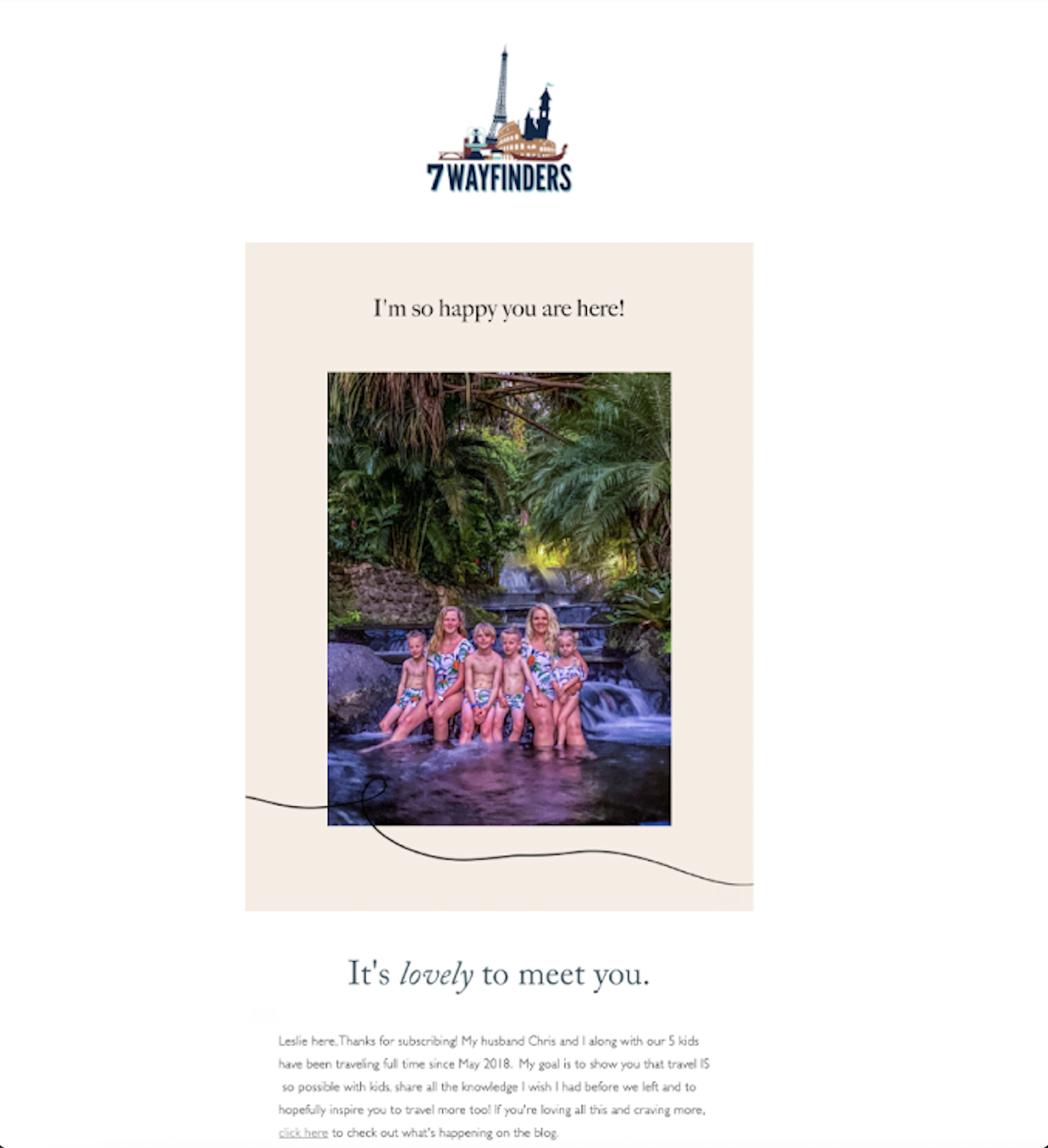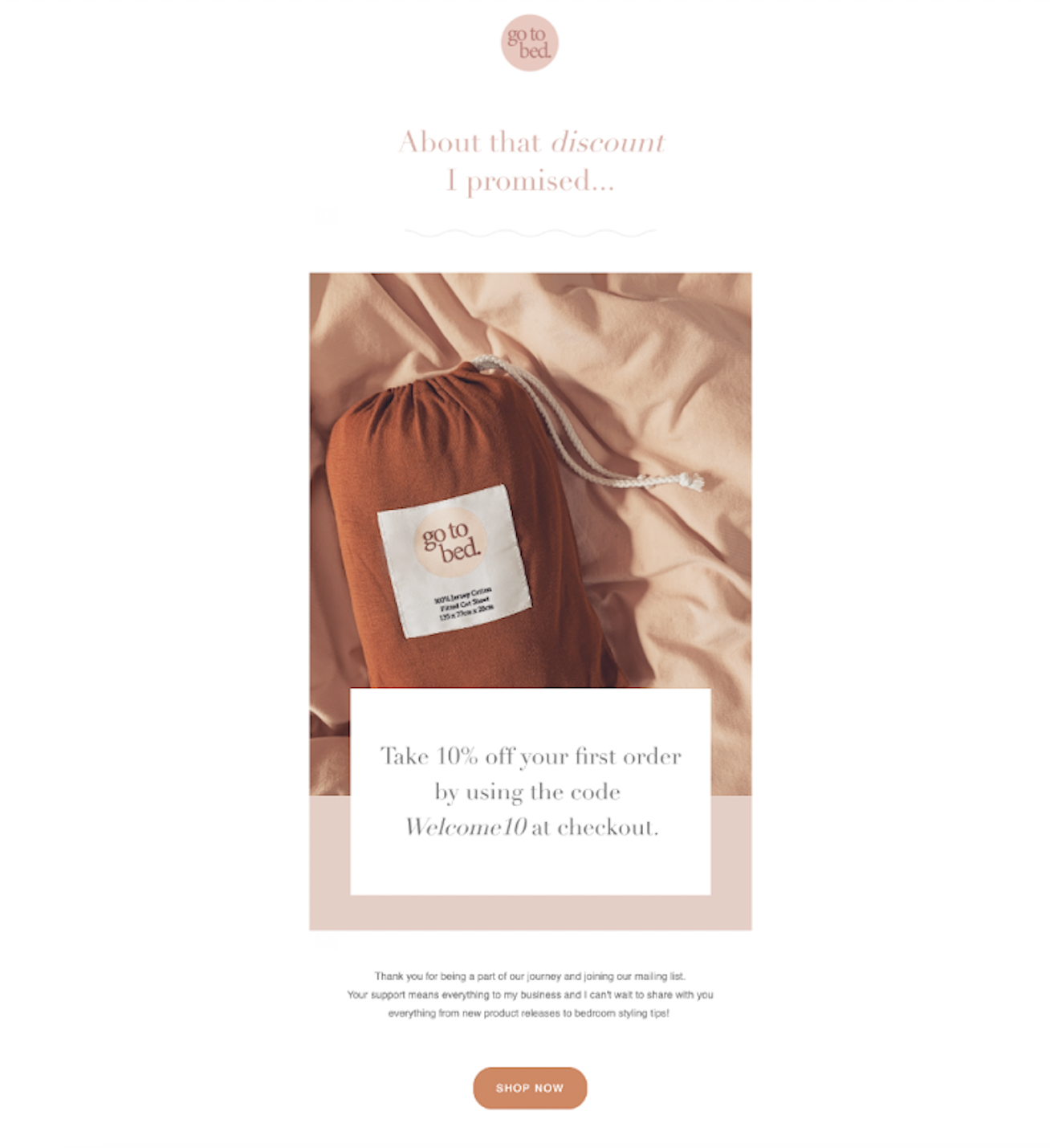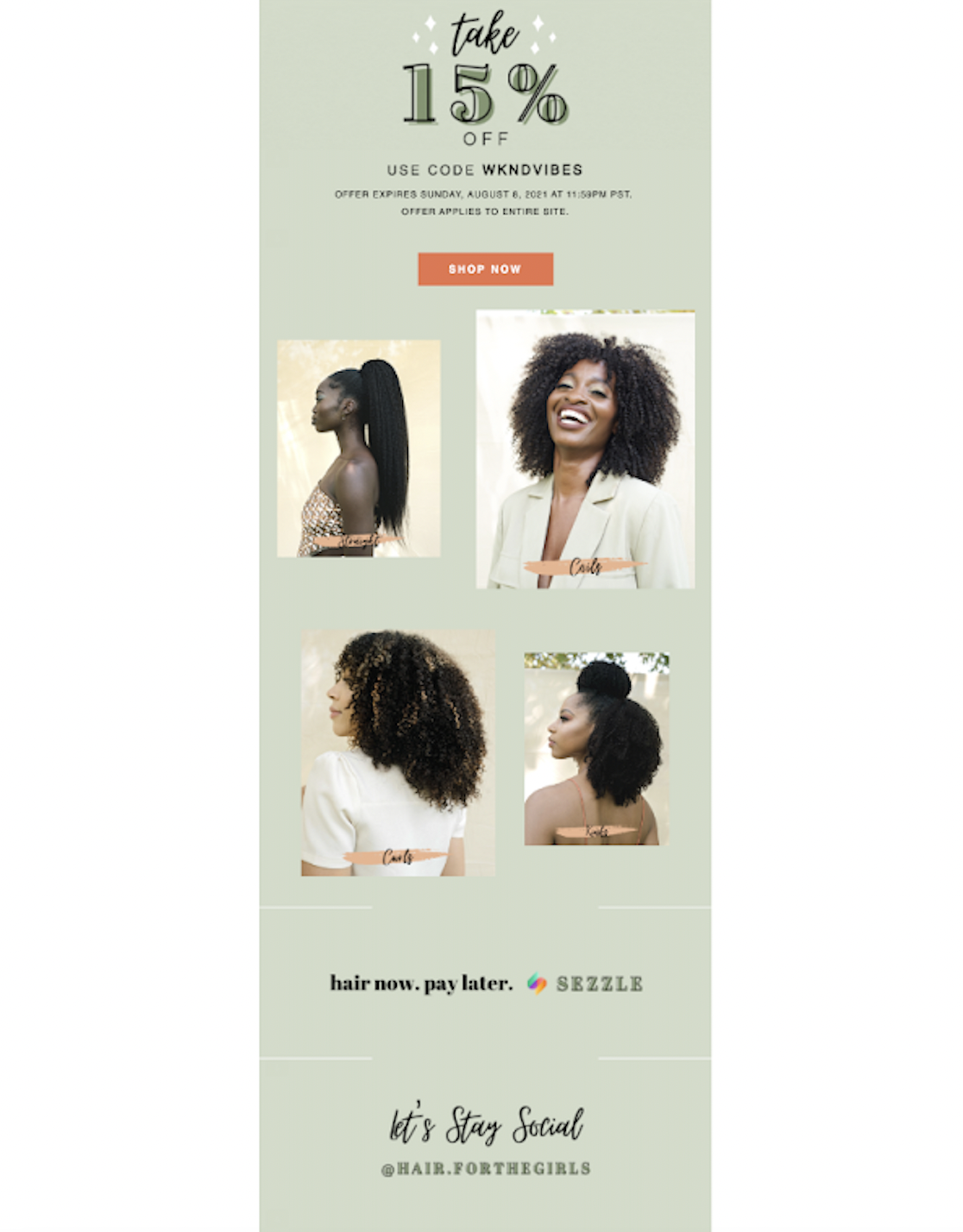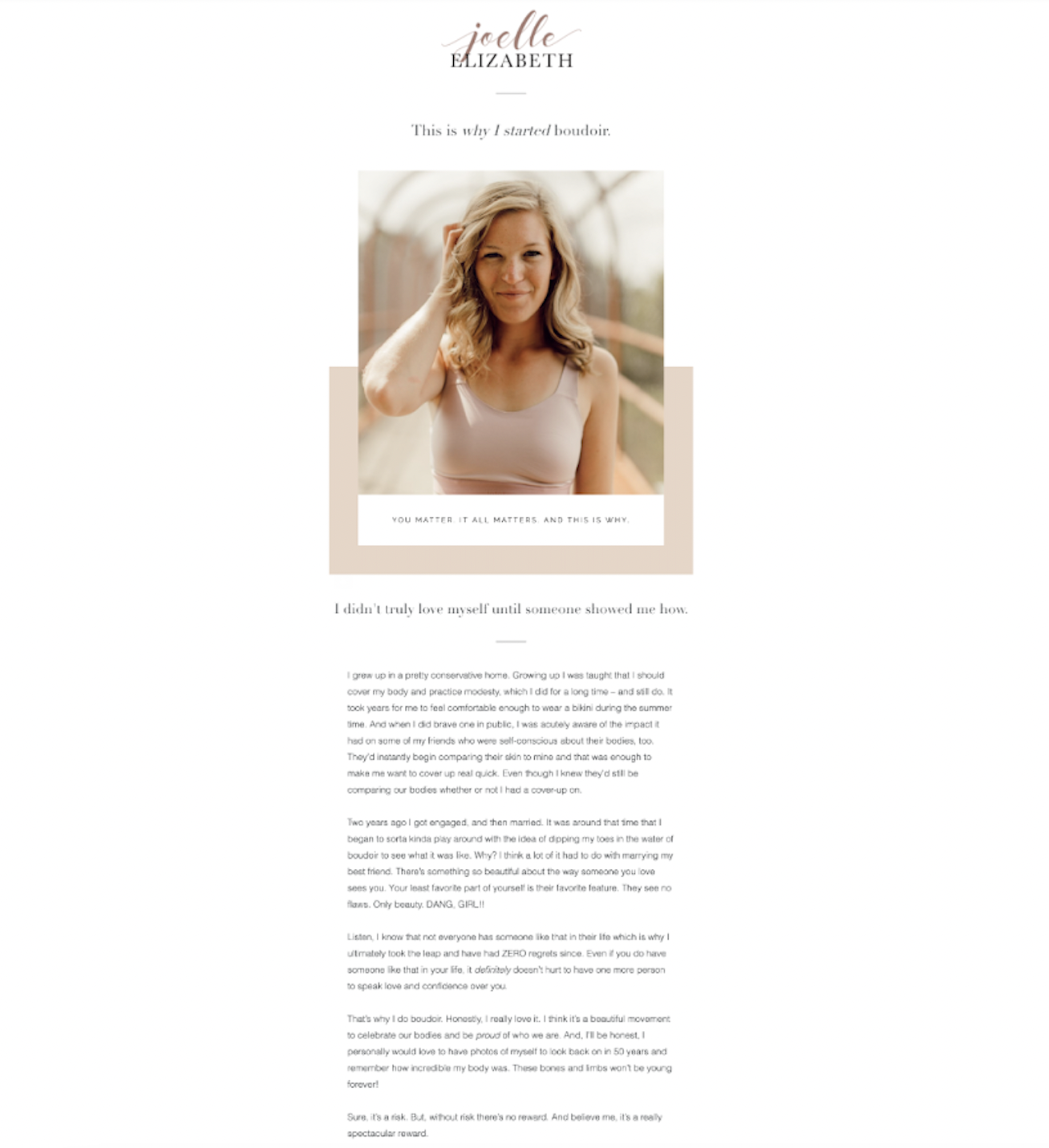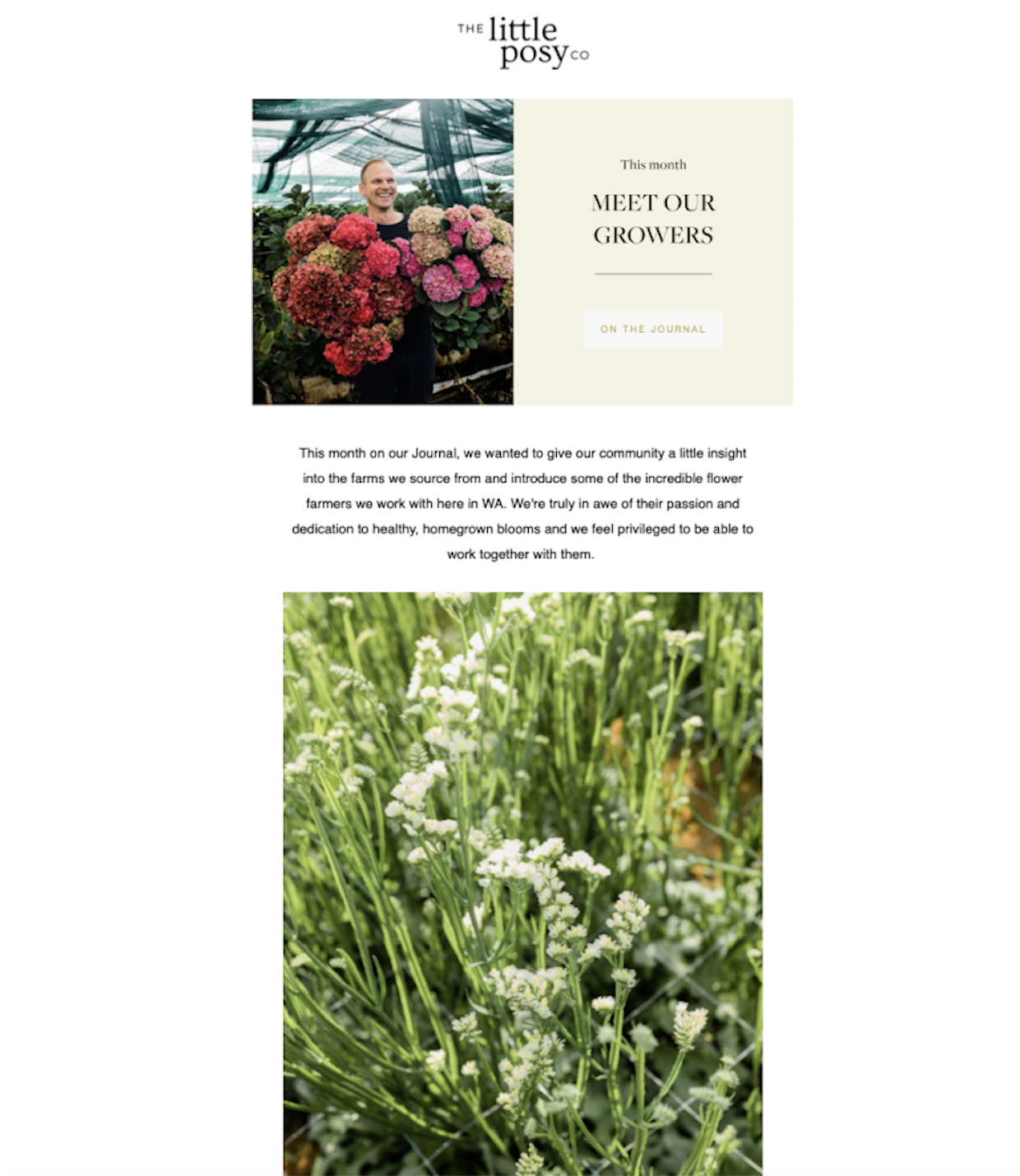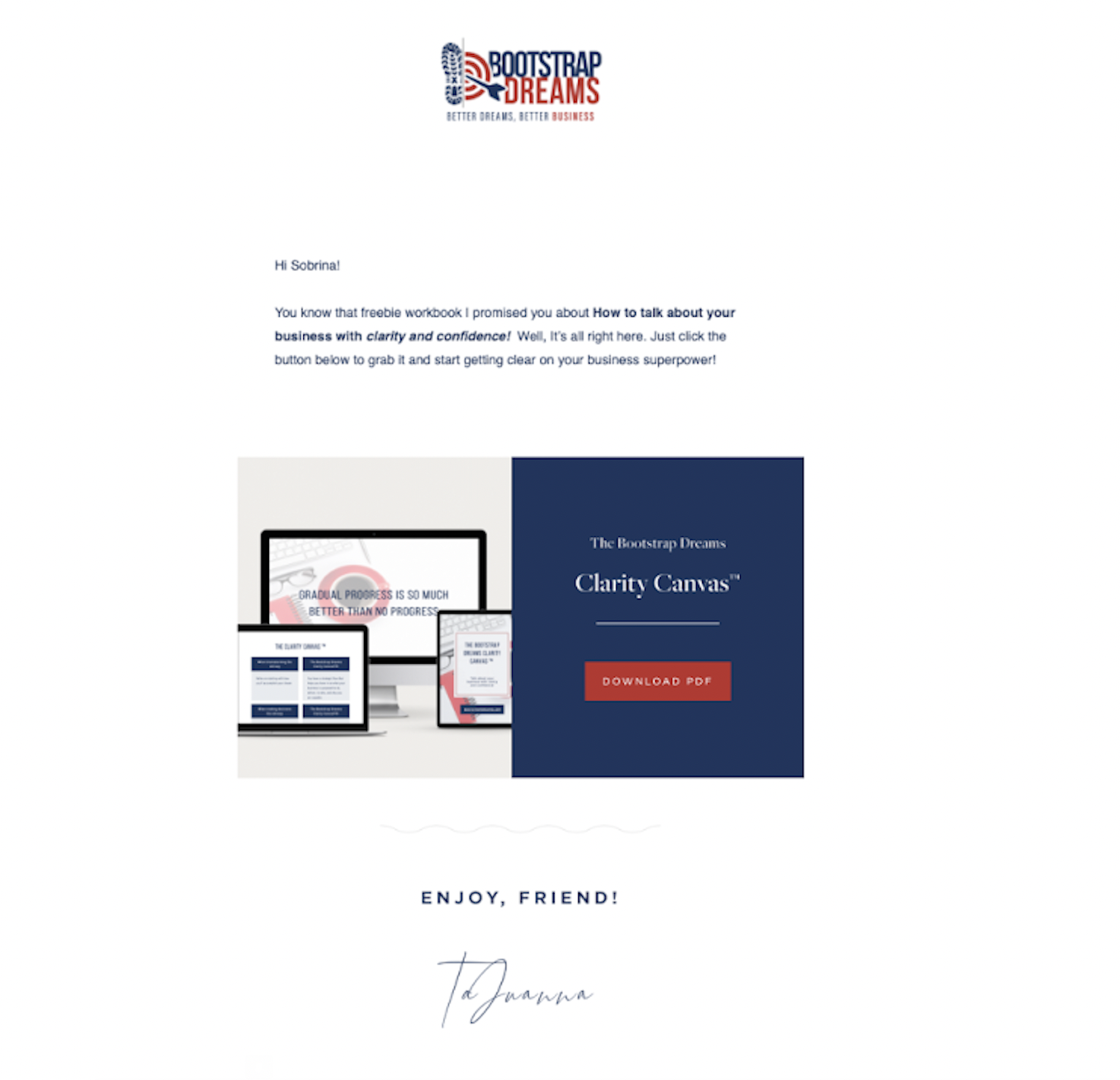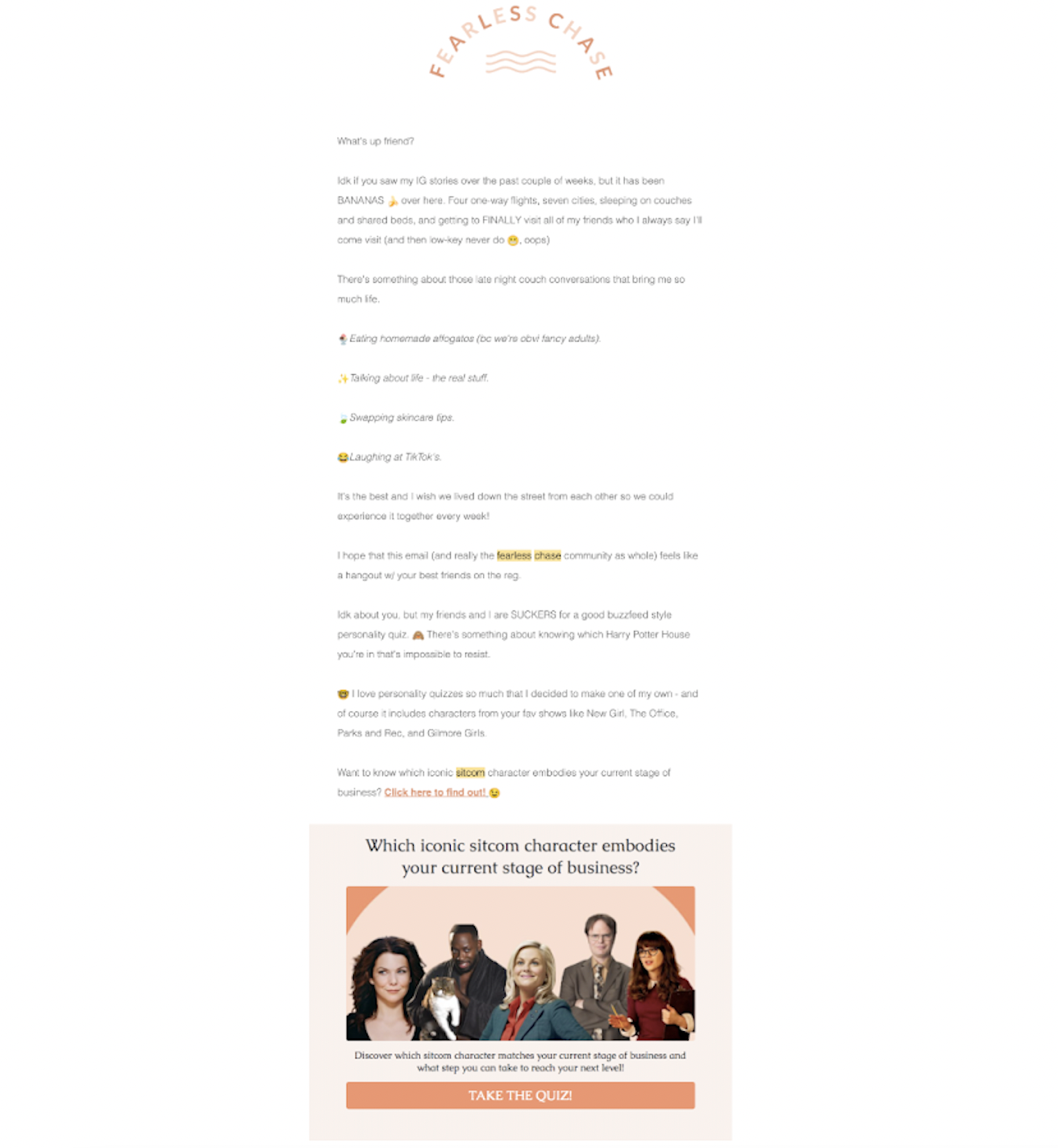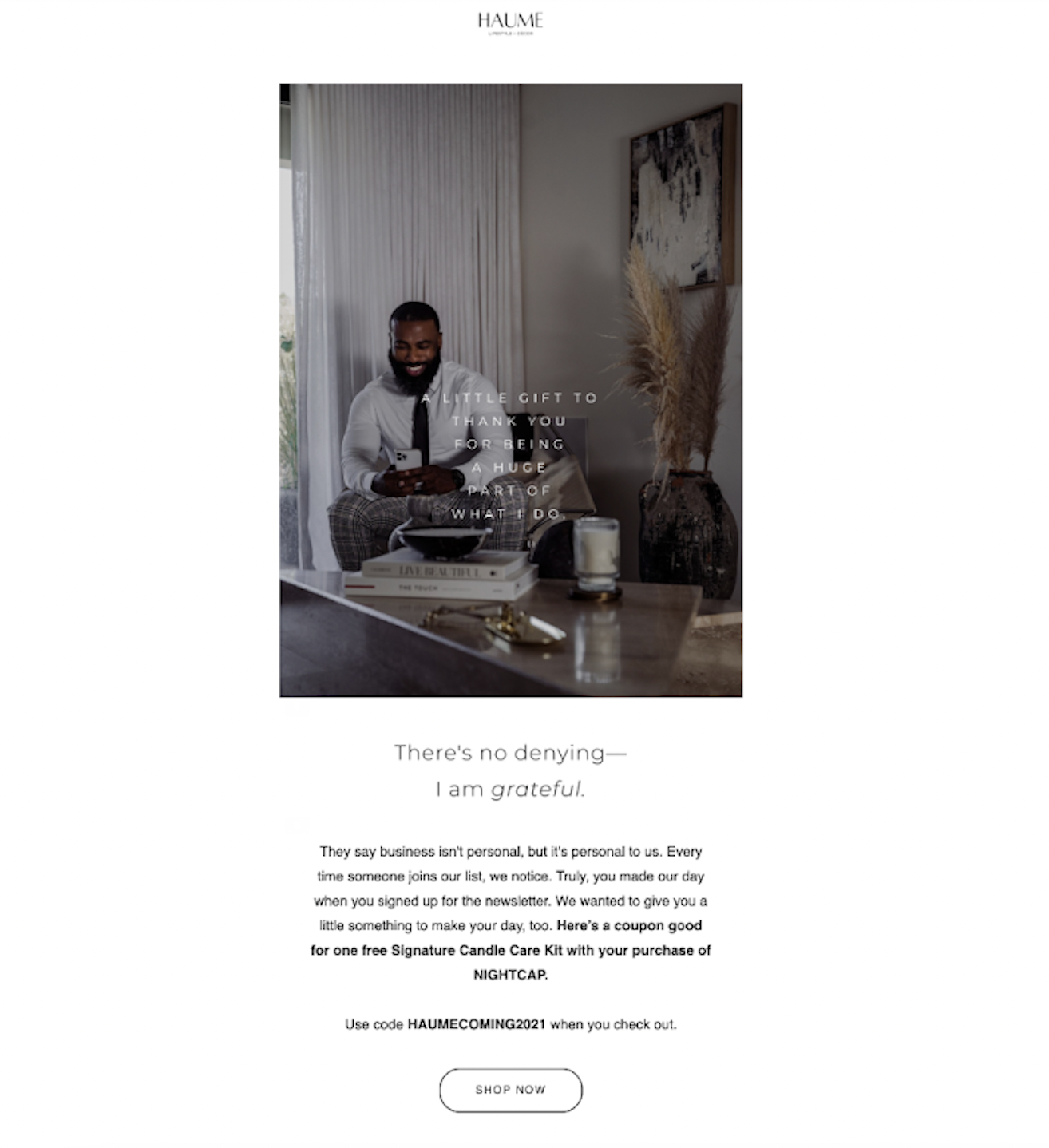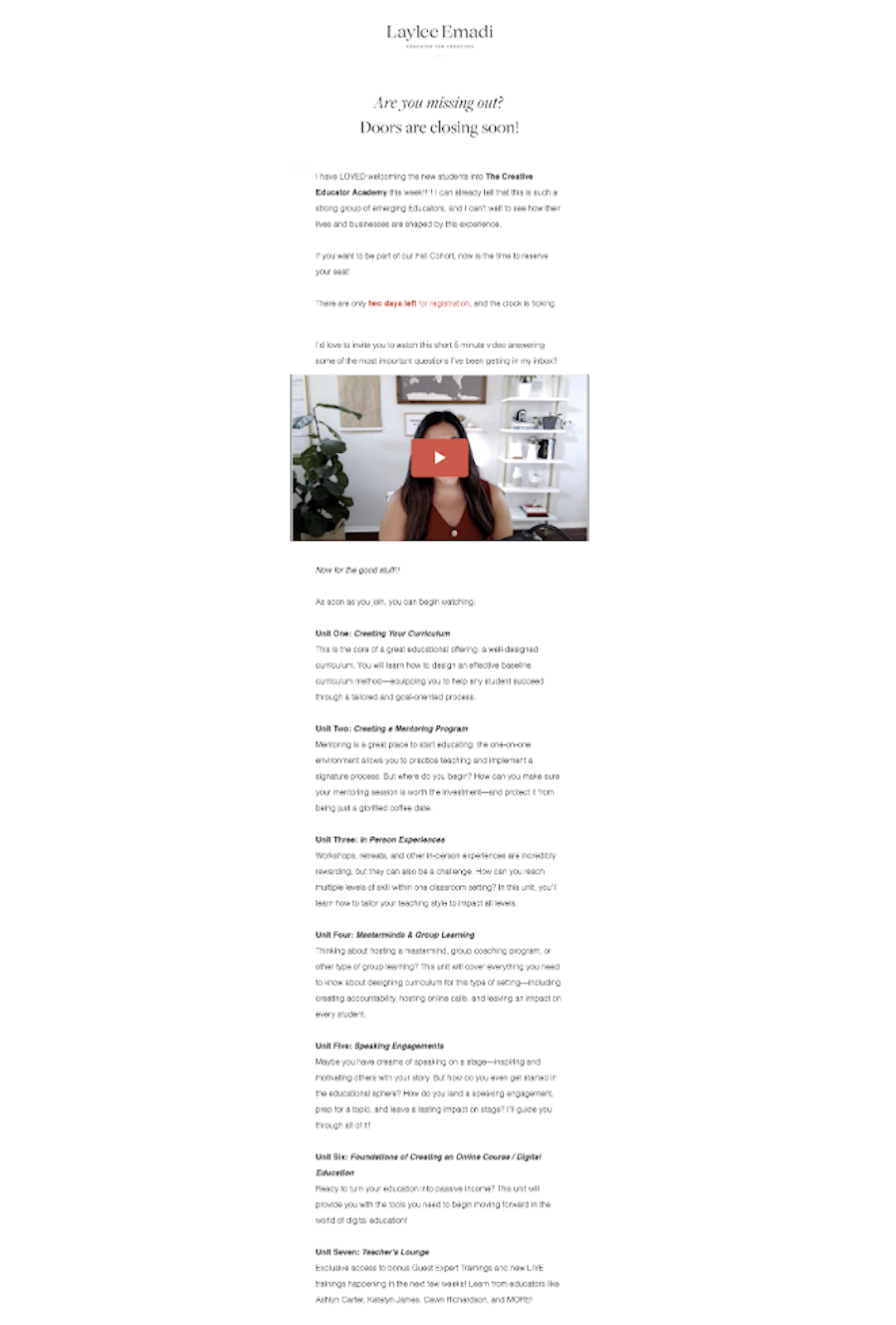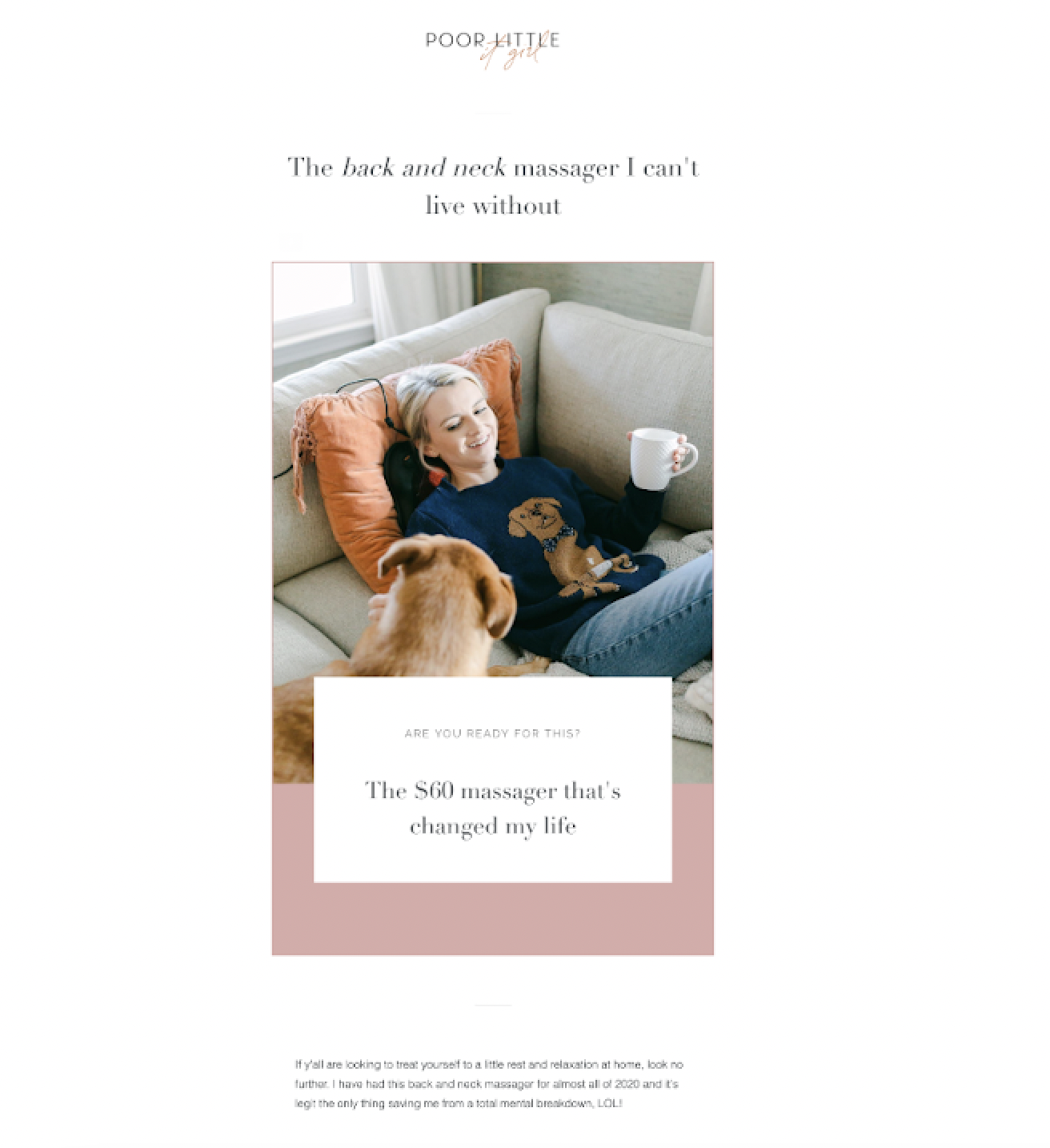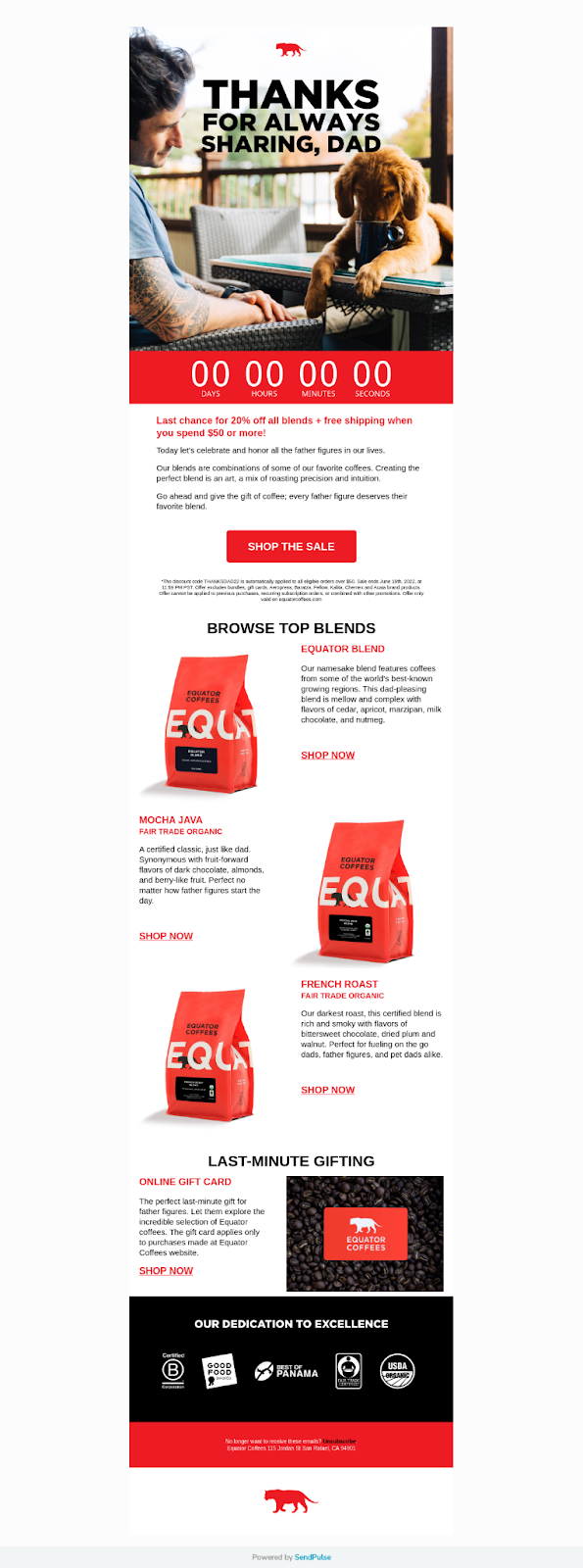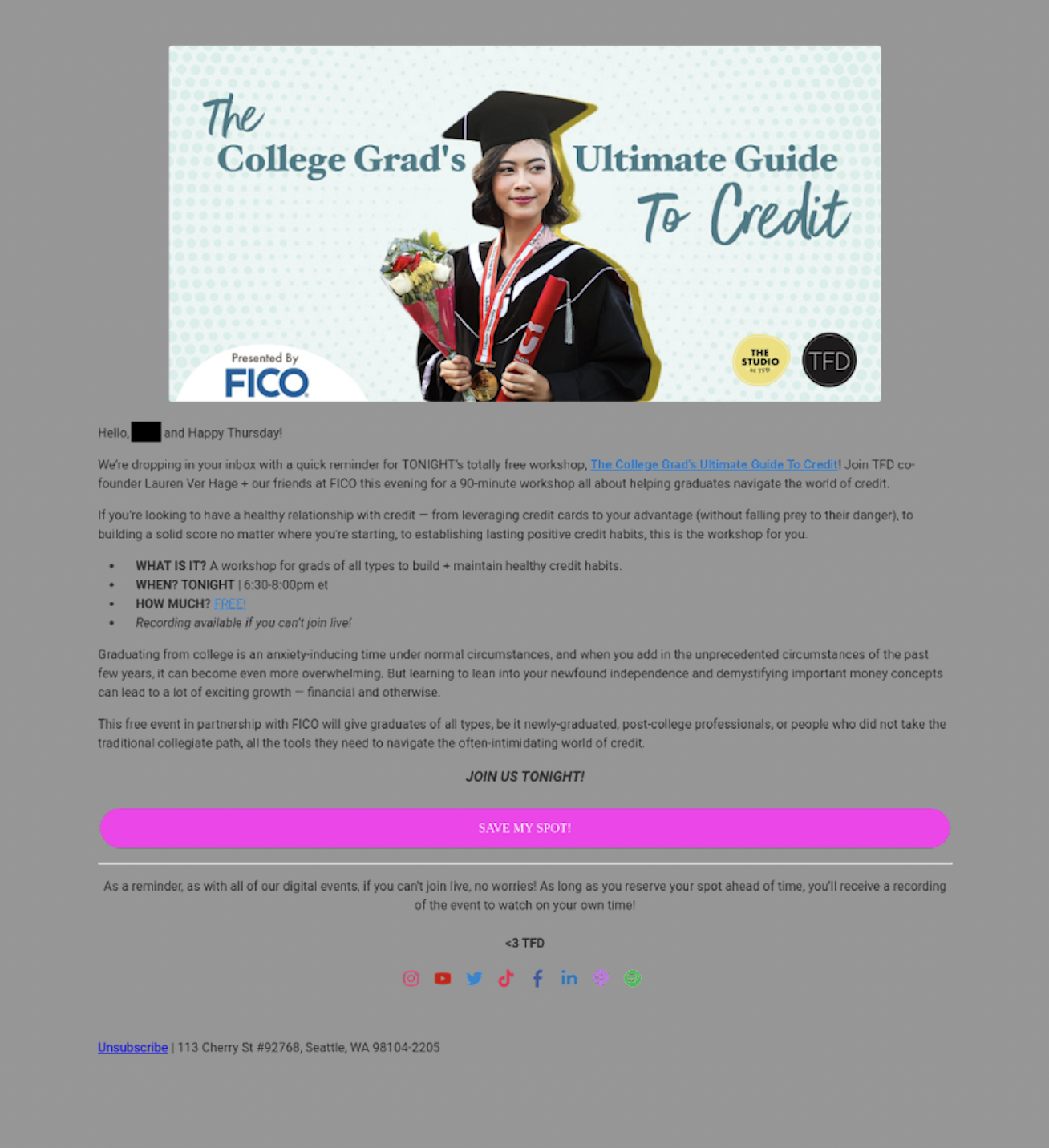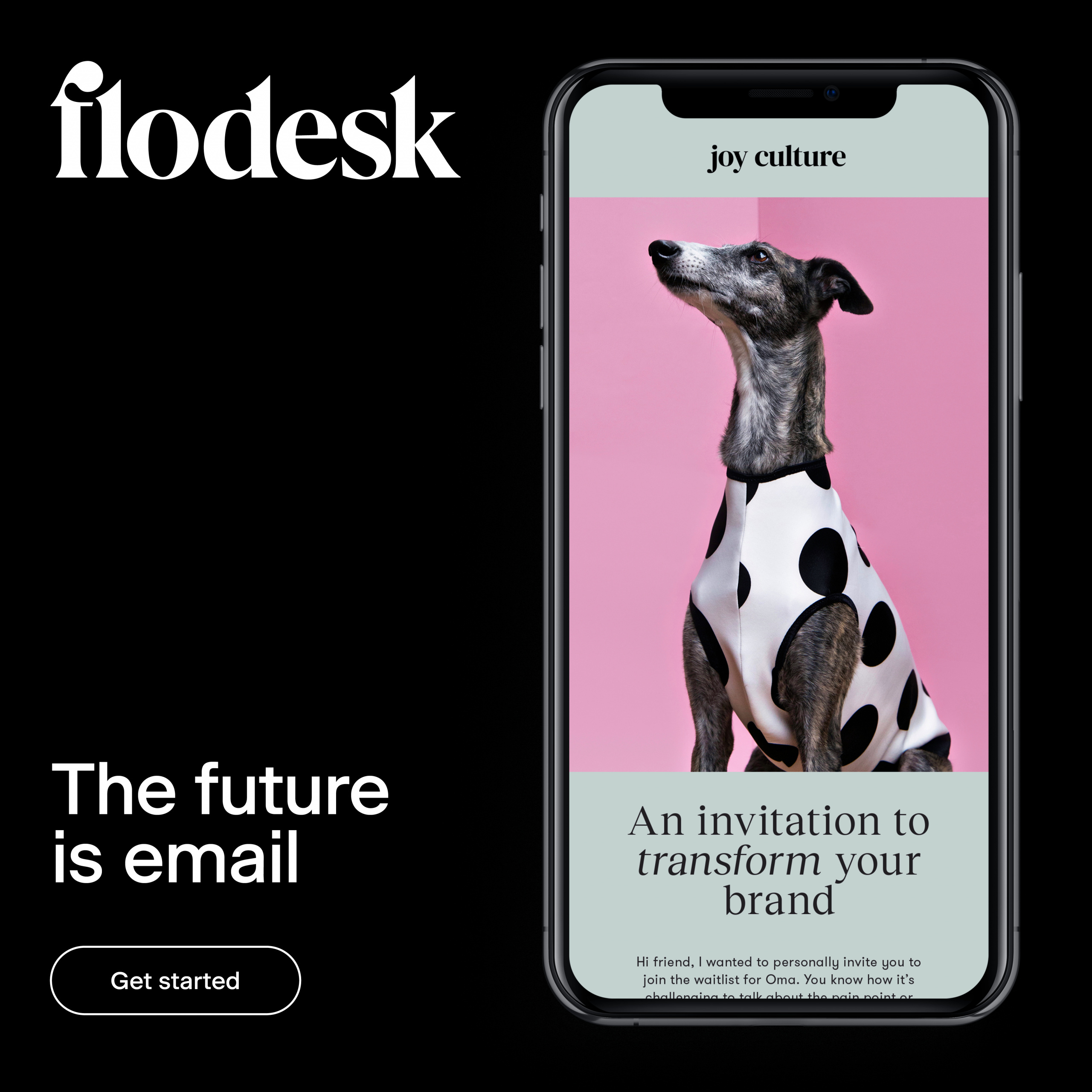15 Lead nurturing email examples getting it right
Table of Contents Jump to:
Jump to:
Table of contents
Most leads never become customers because purchase decisions are complex, not linear.
You have to nurture your leads, becoming the “help department” instead of the “marketing department,” so that when they’re ready to buy, your brand is their first choice.
Turning leads into customers involves offering relevant content, supporting and educating them, and maintaining a sense of connection as they move through the different stages in the sales funnel.
And the best way to successfully run lead nurturing email campaigns? With great lead nurturing emails, of course. According to Ascend2’s The State of Lead Nurturing report, 69% of marketers use email as their #1 channel to nurture leads.
Good lead nurturing emails encourage and entice customers to continue interacting with your brand or motivate them to make a purchase. To inspire your next lead nurturing campaign, we’ll explore 15 different email examples and break down what works for these brands with helpful tips that you can try yourself.
What is a lead nurturing email?
A lead nurturing email is a personalized email sent to potential customers with the goal of building and strengthening relationships, providing valuable information, addressing their needs and concerns, and ultimately guiding them through the sales funnel towards conversion.
Enticing and engaging potential customers, also known as ‘leads’, is a fundamental element of a strong digital marketing strategy. Email marketing expert, Dominik Metlicic, notes:
“Only 3% of any market is in the buying phase. Which means 97% of your market isn’t looking to buy something right now. If you do lead nurturing right, you can capture sales from a MUCH larger pool of prospects, and earn so much more.”
— Dominik Metlicic, Email Marketing Specialist & Business Owner
Ready to Convert More Leads?
With Flodesk, you can nurture your leads effectively and convert them into loyal customers. Sign up for Flodesk and supercharge your lead nurturing emails.
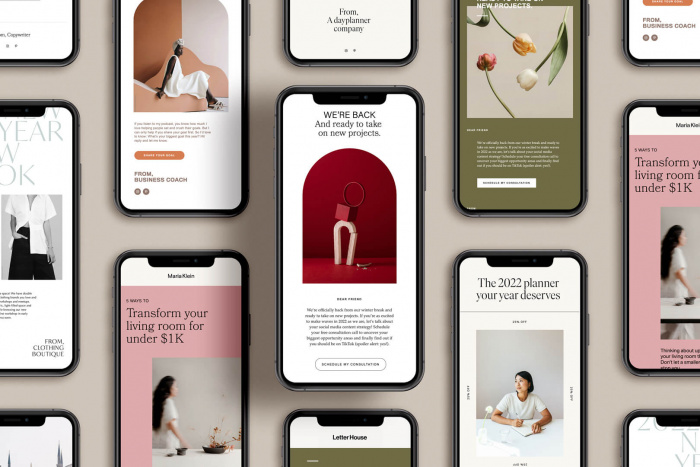
15 amazing lead nurturing emails examples your customers will click on
In order to be effective, each email in the lead nurturing email sequence must be personalized, have a clear purpose, include a call to action, and be sent in a timely manner.
Use these lead nurturing examples below as an inspiration to create a lead nurturing process that takes leads from window shopper to customer without being pushy.
- The “welcome” email
- The “first order discount” email
- The “timed discount” email
- The “why I do this” email
- The “behind the scenes” email
- The “freebie” email
- The “personality quiz” email
- The “free gift with purchase” email
- The “helpful tips” email
- The “curated products” email
- The “what to expect” email
- The “social proof” email
- The “trending now” email
- The “FOMO” email
- The “free workshop” email
1. The “welcome” email
Welcome emails are the perfect way to set the right tone for your relationship with potential customers. This is where you want to address why subscribers should engage with your business in the first place.
7 Wayfinders, a family travel blog, sends out a short and effective welcome email to new subscribers. Leslie, the Founder, enthusiastically welcomes readers in both the subject line and the body of the email.
Why this email works:
- The email addresses subscribers’ pain points and has a clear goal—to show that it’s possible to travel with kids
- The email feels personal because Leslie draws from her personal experience traveling with her husband and their kids
- New leads have a way to easily connect with Leslie by texting the number provided or following her on social media
- Leslie’s choice of words in her sign-off—We are thrilled to have you follow along and get to know you more—is a signal to subscribers that the relationship isn’t purely business
2. The “first order discount” email
The “first order” discount is a great example of a loss leader—selling products at a reduced price to attract new customers. Many (if not most) consumers have come to expect this when shopping in an online store. Offering a discount on the first order lowers the purchase risk and encourages shoppers to buy more, increasing your average order value.
Go to Bed sells 100% cotton fitted cot sheets. In their lead nurturing campaign, they offer new leads a standard 10% discount on their first order for subscribing.
Why this email works:
- By getting a discount immediately after signing up, the subscriber is given a sense of instant gratification
- The call to action is clear and direct
- Offering discounts preemptively can also reduce abandoned cart rates
3. The “timed discount” email
Get this: 88% of US consumers use a coupon while shopping, which shows that offering a discount is a powerful strategy to drive purchases. If potential customers are waiting for a discount to complete their purchase or have abandoned their cart due to high prices, this approach can incentivize them to come back. Making the discount time-bound encourages shoppers to take action immediately. For additional ideas on how to drive more purchases, explore these abandoned cart email examples.
Hair For The Girls sells natural textured hair extensions and wigs. They make good use of this tried and tested strategy in this lead nurturing email example.
Why this email works:
- The simple email gets straight to the point with “Cheers to the weekend” and “take 15% off”
- The terms and conditions of the offer are clearly defined
- The call to action is clear and direct
- The visuals show off the product and give buyers an idea of how the extensions could look on them
4. The “why I do this” email
If you want to gain a leg up on your competitor, focus on your why and share it with potential customers. Building a connection with your subscribers has a direct impact on sales. In fact, 76% of consumers report that they would buy from a brand that they feel connected to over a competitor.
Joelle Elizabeth, the founder of Jo & Co, offers branding photography and coaching services for women. In her email to potential clients, she explains why she does boudoir photography. This engaging story helps her build a real connection with her audience.
Why this email works:
- The email isn’t salesy, even though the story is designed to be a subtle sell for her services
- The benefit of boudoir shoots is clearly mentioned
- There’s a link to Jo & Co’s Instagram so users can see real examples of her work
5. The “behind the scenes” email
Giving a glimpse into what’s going on behind the scenes can help you build an emotional connection between your people and your products. And as we mentioned earlier, people are more likely to spend money on a brand they feel connected to.
The Little Posy Co., a flower delivery service, goes behind the scenes in their monthly journal and introduces readers to the growers—a brilliant approach to marketing, seeing as 62% of people like learning about the people who make up a brand.
Why this email works:
- The lead nurturing email reminds readers that The Little Posy Co.’s flowers are sourced organically and grown with great care
- The product images support the narrative and show potential customers what their flowers will look like
- The transitional call to action encourages readers to check out the journal to read more behind-the-scenes stories
If you’re short on time and resources but still want to add an extra wow factor to your emails, use Flodesk’s Giphy and Unsplash integration to add high-quality visuals and GIFs to your lead nurturing email.
Read Next: How to Create a Waitlist
6. The “freebie” email
Freebies invoke the principle of reciprocity—people are more inclined to give back after they receive something free. You can also use a freebie to give your audience a taste of the quality of your paid offers, alleviating any concerns subscribers may have. Consider creating helpful how-to guides that can convince prospects that what you’re offering is worth their time and money.
TaJuanna, Founder of business coaching and consulting brand Bootstrap Dreams, offers a free workbook to subscribers in this lead nurturing email.
Why this email works:
- The email is short and gets straight to the point
- The call to action is direct and simple
- The copy highlights the expected outcome of taking action: To tart getting clear on your business superpower
7. The “personality quiz” email
Personality quizzes can be a great way to connect with and engage your subscribers. People love taking quizzes because it gives them a chance to learn something new about themselves or their business.
You can also tie quiz results to the products you offer, increasing your conversion rate. For example, if you sell hair products, you can create an engaging “Which celebrity hair type do I have?” quiz. Then you can show potential customers which products they can use to manage their unique hair type.
The Fearless Chase is a business-education and community-focused membership platform. In this email, they use a Buzzfeed-style personality quiz to nurture leads.
Why this email works:
- The quiz includes characters that the target audience can resonate with
- The copy relays what to expect from the quiz and potential next steps
- The email also encourages people to respond with their results, which ultimately helps build a personal connection
8. The “free gift with purchase” email
A free gift with purchase (GWP) gives first-time buyers more value for their money. Research shows that this type of email campaign increases the perceived value of the main item and the likelihood of repeat purchases.
Haume, a Black-owned lifestyle and decor brand, offers a small gift when customers purchase a product.
Why this email works:
- The copy feels personal and genuine, helping foster authentic connection with subscribers
- The email also shares a glimpse of other products that can entice potential shoppers
- The call to action is clear and direct
9. The “helpful tips” email
Offering your subscriber helpful tips is a great way to nurture your relationship with them. By shifting your focus away from paid services and offering timely and valuable content for free, your readers are more likely to trust your business and ultimately become a paying customer.
Her First $100k, a financial feminism movement founded by Tori Dunlap, focuses on educating readers first and then offers a relevant package that can help achieve a specific goal in its lead nurturing campaigns.
Why this email works:
- The “5 signs you should quit your job” is timely content amid the Great Resignation
- The package comes across as a helpful add-on
- The value of the content and the package is clearly outlined
- There’s a link to Instagram where readers can find more helpful and educational content.
10. The “curated products” email
Having a lot of options to choose from isn’t always a good thing. When given too many options, buyers begin to second guess their choices or regretting their decisions. In some cases, they may become so overwhelmed that they give up entirely.
So while it may seem counterintuitive, offering your subscribers a carefully selected list of products instead of promoting the entire store can turn passive browsers into active customers.
Everything Just Baked, a Black-owned bakery, helps its subscribers make a purchasing decision by sharing a curated list of baked goods.
Why this email works:
- The email only offers 4 cookies to potential buyers
- The calls to action are fun and not salesy
- The product descriptions are personalized and playful
11. The “what to expect” email
A first-time customer is often skeptical of the promises online programs make. Questions about price, quality of service, and expected outcomes can deter them from taking action. Offering transparency into the process and what the course entails can ease some of those concerns.
Laylee Emadi, an educator for creatives, beautifully achieves this by sharing what leads can expect from her courses, with detailed information about each unit as well as a video with answers to FAQs.
Why this email works:
- Answering FAQs helps eliminate potential roadblocks that may prevent leads from making a purchase
- The offer is sweetened with exclusive access to training sessions with live guests
- The email ends with the main learning outcome for enrollers
Social proof builds trust and can lead to an increase in sales—ratings and reviews are the most important factors in purchasing decisions, according to the Power of Reviews survey. You can also turn to user-generated content to influence purchases.
Poor Little It Girl, a personal style and shopping blog by Cathy Peshek, uses reviews to demonstrate the value of product recommendations.
Why this email works:
- The email doesn’t expect readers to take her recommendation at face value. She reinforces her recommendation with a rave customer review for further proof
- Potential customers can also click on the “Read More” button to see more such reviews
- The calls to action are direct and simple
13. The “trending now” email
People often obsess over trends because they inherently mean joining a social group, which can spark a sense of belonging. Trends also help customers avoid decision paralysis by offering a clear path forward for those who feel overwhelmed with too many options.
Your “Trending Now” email can showcase top-selling products or predict new fashion trends before they take off.
Inkbox, a company that makes semi-permanent tattoos, uses the following lead nurturing email to share what’s trending with customers.
Why this email works:
- The email mentions the snake tattoo trend and then offers top designs to choose from
- Eye-catching photos are used to showcase the products
- Clear and direct calls to action drive customers to make purchases throughout the email
14. The “FOMO” email
Invoking the fear of missing out (FOMO) is a great tactic to convert leads who have been skeptical to jump in and try the product. Since we’re a risk-averse species, we often can’t resist the urge to take advantage of discounts for fear that we may regret not grabbing the deal in the future.
Equator Coffees invokes FOMO with this “last chance for discount” email
Why this email works:
- The fear of missing out on significant discounts acts as a motivator to make a purchase
- The discounts help rationalize the price of coffee blends to potential buyers
- The offer is tied to an important event (Father’s Day) which encourages people to buy the coffee as a gift
15. The “free workshop” email
Workshops let people see the value of the content your business is creating, which can convince them to make swift purchases. Workshops are also a great way to build authentic relationships with potential customers and address their needs.
The Financial Diet, founded by Chelsea Fagan, is a digital destination for young women to talk about money. This email acts as a nice reminder about an upcoming workshop and encourages subscribers to join.
Why this email works:
- The email offers complete transparency on what to expect from the workshop and who it’s for
- The copy also addresses a pain point— that graduating from college is an anxiety-inducing time
- The CTA is bolded and highlighted to encourage more clicks
Nurture leads at every stage with Flodesk
Flodesk helps small businesses design emails people love to get. The gorgeous range of email and opt-in form templates make it easy to build, grow, and nurture your list. You can quickly send emails and convert leads into paying customers—no website necessary.
Better yet, put your email marketing on autopilot with Flodesk Workflows. You can quickly automate your lead magnet delivery, welcome email sequence, lead nurturing email campaign, and more. Set up a workflow in Flodesk to build relationships (and make sales!) while you sleep.
At Flodesk, we like to keep it simple. Enjoy flat-rate pricing and unlimited access, forever. Get unlimited emails, subscribers, forms, and features for as little as $38/month. Try Flodesk free for 30 days.
